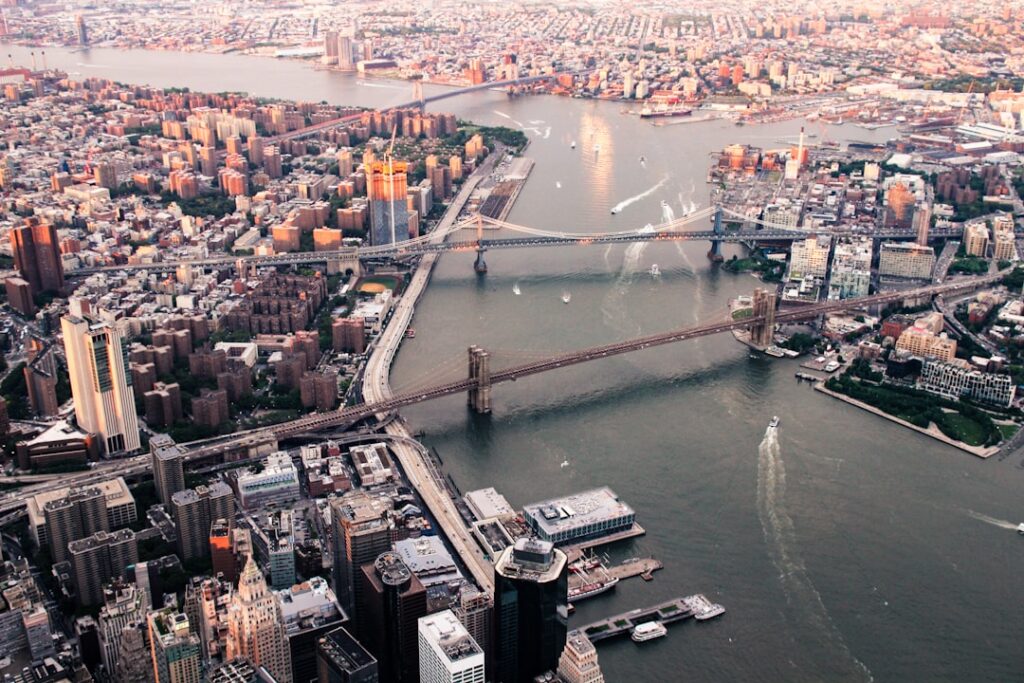On the morning of September 11, 2001, the world watched in horror as the United States experienced one of the most devastating terrorist attacks in history. Four commercial airplanes were hijacked by members of the extremist group al-Qaeda. Two of the planes were flown into the Twin Towers of the World Trade Center in New York City, causing both towers to collapse within hours. Another plane crashed into the Pentagon in Arlington, Virginia, while the fourth plane, United Airlines Flight 93, crashed into a field in Pennsylvania after passengers attempted to regain control from the hijackers. The attacks resulted in the deaths of nearly 3,000 people, including passengers and crew on the planes, first responders, and civilians in the targeted areas.
The events of September 11, 2001, sent shockwaves around the world and forever changed the course of history. The attacks were a stark reminder of the vulnerability of even the most powerful nations and sparked a global war on terrorism. The impact of that fateful day continues to be felt in countless ways, from national security policies to the collective psyche of the American people and beyond.
Key Takeaways
- The tragic events of September 11, 2001, marked a turning point in global history, with the terrorist attacks on the World Trade Center and the Pentagon leading to widespread devastation and loss of life.
- The impact on New York City and the world was profound, with the attacks leading to a heightened sense of vulnerability and a shift in global politics and security measures.
- The rebuilding and memorialization of Ground Zero has been a long and emotional process, with the construction of the 9/11 Memorial and Museum serving as a place of remembrance and reflection for the victims and their families.
- The continued effects on national security and global politics have led to increased surveillance and counterterrorism efforts, shaping the way countries approach security and diplomacy.
- The resilience and unity of the American people were evident in the aftermath of 9/11, with communities coming together to support one another and honor the victims of the attacks.
The Impact on New York City and the World
The impact of the September 11 attacks on New York City was profound and far-reaching. The destruction of the Twin Towers not only resulted in the loss of thousands of lives but also caused extensive damage to surrounding buildings and infrastructure. The attacks also had a significant economic impact, disrupting businesses and causing billions of dollars in property damage. The city was left reeling from the devastation, and the emotional toll on its residents was immeasurable.
Beyond New York City, the attacks had a ripple effect that reverberated across the globe. The international community stood in solidarity with the United States, offering support and condolences in the wake of the tragedy. The attacks also prompted a reevaluation of security measures and counterterrorism efforts worldwide. The world watched as the United States embarked on a mission to root out terrorism and bring those responsible for the attacks to justice. The events of September 11, 2001, served as a stark reminder of the interconnectedness of nations and the need for global cooperation in addressing threats to peace and security.
The Rebuilding and Memorialization of Ground Zero
In the aftermath of the September 11 attacks, efforts to rebuild and memorialize Ground Zero began almost immediately. The site where the Twin Towers once stood became a symbol of resilience and remembrance. Plans were put in place to create a memorial and museum to honor the victims and preserve the memory of that fateful day. The process of rebuilding was complex and emotionally charged, as it involved navigating issues of urban planning, design, and commemoration.
The construction of One World Trade Center, also known as the Freedom Tower, became a focal point of the rebuilding efforts. The skyscraper stands as a testament to the strength and determination of New Yorkers and serves as a symbol of hope and renewal. In addition to One World Trade Center, a memorial plaza was created at Ground Zero, featuring reflecting pools in the footprints of the original Twin Towers, surrounded by bronze panels inscribed with the names of those who perished in the attacks. The 9/11 Memorial Museum was also established to provide a place for reflection and education about the events of that tragic day.
The Continued Effects on National Security and Global Politics
| Topic | Impact |
|---|---|
| Terrorism | Increased surveillance and security measures |
| Cybersecurity | Rising concerns over cyber attacks and data breaches |
| International Relations | Shifts in alliances and diplomatic tensions |
| Military Spending | Allocation of resources for defense and strategic capabilities |
| Migration | Impact on borders and immigration policies |
The September 11 attacks had a profound impact on national security policies in the United States and around the world. In response to the attacks, the U.S. government implemented sweeping changes to its security apparatus, including the creation of the Department of Homeland Security and the passage of legislation such as the USA PATRIOT Act. These measures were aimed at enhancing surveillance, intelligence gathering, and counterterrorism efforts to prevent future attacks.
Internationally, the attacks led to a reevaluation of global politics and security dynamics. The United States led a coalition of nations in a campaign to dismantle al-Qaeda and its affiliates, resulting in military interventions in Afghanistan and Iraq. The events of September 11 also heightened tensions between Western nations and the Muslim world, leading to increased scrutiny of immigration policies and diplomatic relations.
The legacy of September 11 continues to shape discussions around national security and foreign policy, influencing decisions related to military interventions, intelligence gathering, and counterterrorism strategies. The attacks served as a catalyst for ongoing debates about civil liberties, privacy rights, and the balance between security and individual freedoms.
The Resilience and Unity of the American People
In the aftermath of the September 11 attacks, Americans demonstrated remarkable resilience and unity in the face of adversity. Communities across the country came together to support one another and honor the memory of those who perished in the attacks. The outpouring of solidarity was evident in acts of kindness, volunteerism, and charitable giving as people sought to help those affected by the tragedy.
The spirit of unity was also reflected in displays of patriotism and national pride. American flags adorned homes, businesses, and public spaces as a symbol of solidarity and resolve. The sense of shared purpose was palpable as people from all walks of life rallied around a common cause: to heal and rebuild in the wake of unspeakable loss.
The resilience and unity demonstrated by Americans in response to the September 11 attacks continue to serve as a source of inspiration and strength. The spirit of solidarity that emerged from that dark day remains an enduring testament to the indomitable human spirit.
The Ongoing Efforts to Remember and Honor the Victims

In the years following the September 11 attacks, efforts to remember and honor the victims have remained steadfast. Memorials and commemorative events are held annually to pay tribute to those who lost their lives on that tragic day. Families, friends, and loved ones gather to remember their lost ones and find solace in each other’s company.
The 9/11 Memorial & Museum has played a central role in preserving the memory of the victims and ensuring that their stories are never forgotten. The museum’s exhibitions provide a comprehensive account of the events leading up to and following September 11, offering visitors an opportunity to learn about the impact of the attacks on individuals, families, and communities.
In addition to formal memorials and institutions, countless individuals have found their own ways to honor the victims through acts of remembrance and service. From volunteer efforts to charitable initiatives, people continue to find meaningful ways to pay tribute to those who perished on September 11.
Looking Towards the Future: Lessons Learned and the Legacy of the Torres Gemelas
As we reflect on the legacy of September 11, it is clear that the events of that day have left an indelible mark on our collective consciousness. The tragedy served as a stark reminder of the fragility of life and the importance of cherishing each moment we have with loved ones. It also underscored the resilience of human spirit in times of adversity.
The legacy of September 11 extends beyond remembrance; it serves as a catalyst for ongoing conversations about tolerance, understanding, and unity. In a world marked by division and conflict, it is crucial to heed the lessons learned from that fateful day and strive for greater empathy and compassion towards one another.
As we look towards the future, it is imperative that we continue to honor the memory of those who perished on September 11 by upholding values of peace, justice, and solidarity. By doing so, we can ensure that their legacy endures as a beacon of hope for generations to come.
Check out this fascinating article on the iconic Torres Gemelas and their impact on the architectural landscape. The article delves into the history and significance of these twin towers, offering a comprehensive exploration of their design and construction. It also discusses their enduring legacy and the global response to their tragic destruction. For more insightful content on architecture and design, visit watchesgreat.com.
FAQs
What were the Torres Gemelas?
The Torres Gemelas, also known as the Twin Towers, were a pair of skyscrapers located in Lower Manhattan, New York City. They were part of the World Trade Center complex and were iconic symbols of the city’s skyline.
When were the Torres Gemelas built?
Construction of the Torres Gemelas began in 1966 and was completed in 1973. They were designed by architect Minoru Yamasaki and engineer Leslie E. Robertson.
What happened to the Torres Gemelas?
On September 11, 2001, the Torres Gemelas were the target of a terrorist attack when two hijacked airplanes were flown into the buildings. The impact and resulting fires caused the towers to collapse, leading to the deaths of nearly 3,000 people.
What was the impact of the Torres Gemelas attack?
The attack on the Torres Gemelas had a profound impact on the United States and the world. It led to significant changes in security measures, foreign policy, and the way the world viewed terrorism. It also resulted in the loss of thousands of lives and had long-lasting effects on the families of the victims and the city of New York.
What is the site of the Torres Gemelas now?
After the attack, the site of the Torres Gemelas became known as Ground Zero. In the years following the attack, a memorial and museum were built on the site to honor the victims and preserve the memory of the towers. The area has also been redeveloped, with new buildings and a memorial park.


